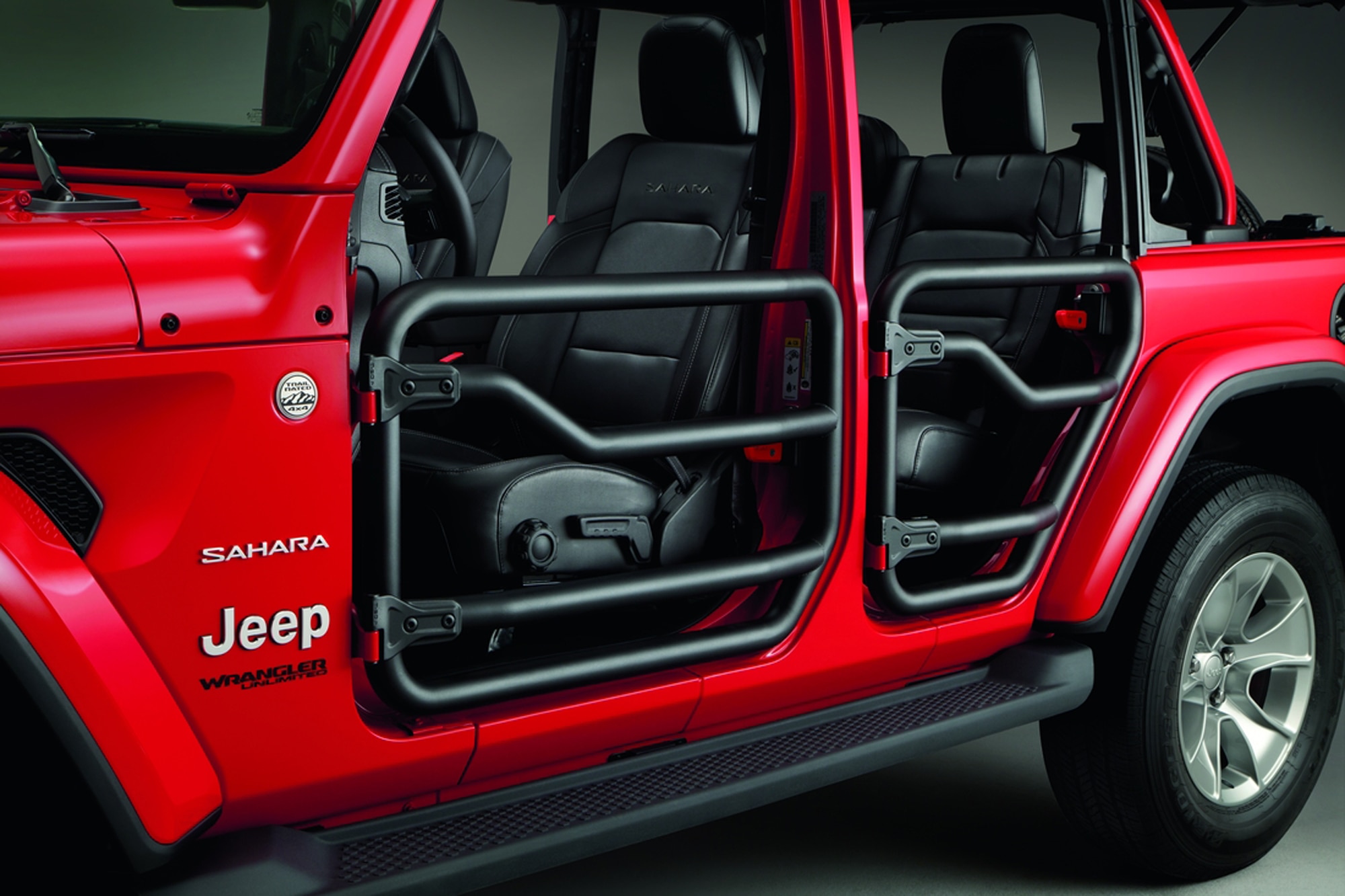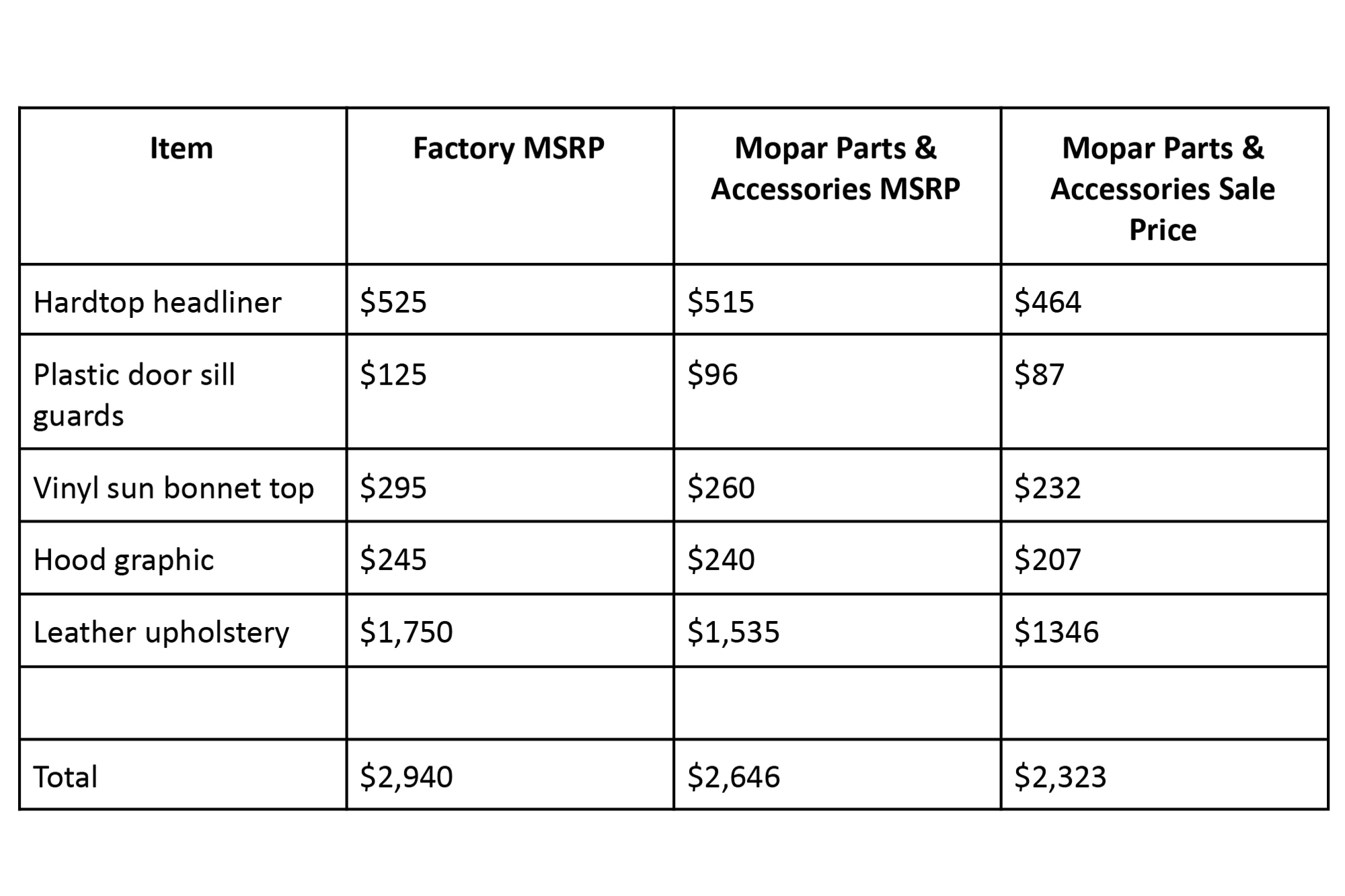Factory-, Port-, and Dealer-Installed Accessories Explained
You might be paying more than you should for those floor mats.
 Jeep
Jeep
Choosing options and accessories would seem to be the easiest part of the sometimes complex car purchase adventure, but you could save hundreds of dollars by doing a little research.
When ordering a new vehicle, many consumers opt to buy their accessories directly from the manufacturer for convenience and peace of mind. Sometimes the people assembling the car will fit these options at the factory before putting the model on a ship or truck. On imported vehicles, some options are installed later, at the port of entry. Some of the automaker's accessories are dealer-installed, as well. In all cases, the automaker sets the price for these features, which you’ll find listed on the car’s federally required Monroney sticker.
As for off-the-lot models, some new-car dealerships add additional equipment or services, such as window tint, floor mats, or a remote starter. Every dealer determines how much to charge for these items, so pricing will vary from showroom to showroom. It’s usually not the most economical way to get such add-ons, but it is convenient.
Can You Refuse Dealer-Installed Options?
You can try. When a dealer modifies a vehicle, the change must be noted on an addendum sticker before the car makes its way to the showroom floor. Sometimes the dealer places this sticker alongside the Monroney to make it appear that these add-ons are non-negotiable, and that may be the case. You can ask the dealer to remove those unnecessary wheel locks from the car and knock $80 off the price, but they don't have to comply. Plus, some things—like rustproofing and stain protection may not be up for negotiation—and the dealer may insist that what's done is done.
Common Dealer-Installed Extras You Can Skip
Dealers will often pad a vehicle’s price with fabric stain protection, vehicle undercoating, and/or nitrogen-filled tires. The first is a widely available liquid-repelling coating that you can apply yourself with an aerosol can, if you think you need it. The second—undercoating—is a favorite add-on of some dealers, but Consumer Reports recommends against it. That’s because factory rust protection is generally quite adequate, and in some cases, applying a layer of undercoating may trap moisture and encourage rusting. As for nitrogen-filled tires, they maintain a relatively consistent pressure whether hot or cold and leak less rapidly than those filled with air. But if you want this convenience, a tire store can fill your tires with nitrogen at a cost that is usually less than the dealer's.
Don’t Forget About the Aftermarket
Sometimes the price of an option costs more from the factory than the aftermarket. For example, as detailed in the chart below, Mopar Parts offers several Wrangler Unlimited accessories for a better price than Jeep does. And that’s before you consider the additional savings of regional and/or temporary discounts.
 All prices correspond to the 90210 ZIP code
All prices correspond to the 90210 ZIP code
This isn’t always the case, of course. Much of the time, the aftermarket can’t match the automaker’s deals. It’s also worth noting that when you buy parts from the factory or dealer, the cost of those items is then rolled into the vehicle’s financing, allowing you to pay them off over time. That’s not the case with the aftermarket.
Editor’s Note: For consistency, Capital One sought out currently advertised offers using a Southern California ZIP code. Southern California is the country's largest new-car market and it is not served by independent distributors that may set their own prices, lease programs, and financing deals.
Written by humans.
Edited by humans.
 Paul Stenquist
Paul StenquistPaul Stenquist has written about cars and the auto industry for more than 40 years. He is a frequent contributor to dozens of publications. As a University of Chicago M.A. and former race car mechanic, he has cracked textbooks and busted knuckles.
Related articles
View more related articles